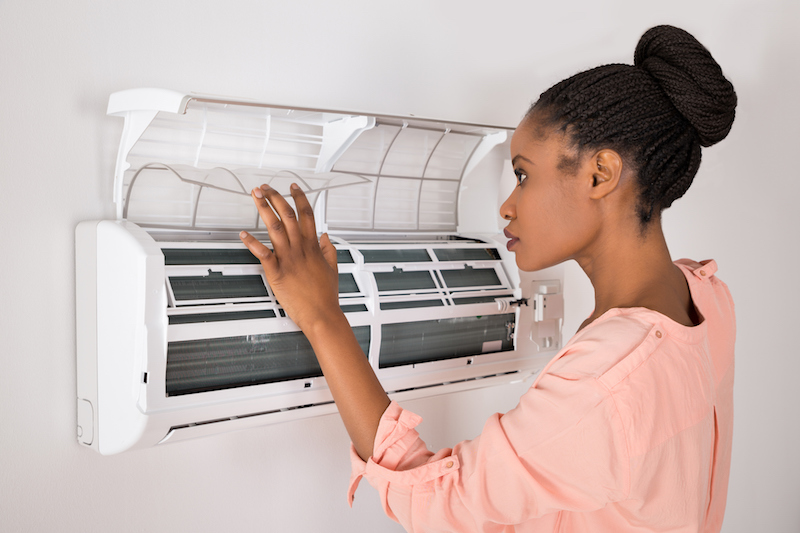
You shouldn’t need to compromise on comfort or drain your wallet to keep your home at a pleasant setting during summer weather.
But what is the best temperature, exactly? We review suggestions from energy pros so you can select the best temp for your residence.
Here’s what we advise for the most energy-efficient setting for air conditioning in Odessa.
Recommended Thermostat Settings for Summer
Most households find placing the thermostat at 72-73 degrees is ideal. However, if there’s a major difference between your interior and outside warmth, your electrical expenses will be greater.
These are our recommendations based on the U.S. Department of Energy (DOE) and ENERGY STAR®.
While at home: 78 degrees. While that seems warm, there are approaches you can keep your house cool without having the air conditioner on all the time.
Keeping windows and blinds shut during the day keeps cold air where it needs to be—within your home. Some window coverings, like honeycomb shades or plantation shutters, are designed to offer more insulation and enhanced energy efficiency.
If you have ceiling fans in your residence, the DOE says you can increase thermostat temps about 4 degrees warmer without compromising comfort. That’s because they refresh with a windchill effect. Since they cool people, not rooms, shut them off when you move from a room.
If 78 degrees still seems too hot on the surface, try doing a test for a week or so. Get started by increasing your temperature to 78 degrees while you’re home. Then, gradually turn it down while following the tips above. You may be amazed at how cool you feel at a hotter temperature setting.
While away: 88 degrees. There’s no rationale for keeping the AC on all day while your home is vacant. Moving the setting 7–10 degrees hotter can save you an estimated 5–15% on your AC bills, according to the DOE.
When you come home, don’t be tempted to put your thermostat colder than 78 to cool your residence more rapidly. This isn’t effective and typically results in a bigger electrical cost.
A programmable thermostat is a good way to keep your settings in check, but it requires setting programs. If you don’t use programs, you risk forgetting to raise the set temperature when you go.
If you need a hassle-free remedy, think about getting a smart thermostat. This thermostat links with your phone, so it knows when you’re at your house and when you’re out. Then it instinctively adjusts temperature settings for maximum savings. How much exactly? Usually $180 annually on heating and cooling, according to ENERGY STAR.
Another benefit of installing a smart thermostat? You can use your phone to watch and adjust temperature settings from nearly anywhere.
While sleeping: Around 70 degrees. While ENERGY STAR suggests 82 degrees, that may be too uncomfortable for the majority of families. Many people sleep better when their sleeping area is chilled, so that’s why the National Sleep Foundation advises 60–67 degrees. But that might be too chilly, depending on your PJ and blanket preference.
We advise using a similar test over a week, putting your thermostat higher and steadily lowering it to pinpoint the best temperature for your residence. On pleasant nights, you may learn keeping windows open at night and relying on a ceiling fan is a preferable option than operating the AC.
More Methods to Use Less Energy During Hot Weather
There are added ways you can spend less money on utility bills throughout warm weather.
- Buy an energy-efficient cooling system. Central air conditioners only work for about 12–15 years and lose efficiency as they become older. An updated air conditioner can keep your house comfier while keeping AC costs down.
- Set yearly air conditioner maintenance. Regular air conditioner maintenance keeps your system operating smoothly and could help it operate more efficiently. It might also help extend its life expectancy, since it helps technicians to pinpoint little problems before they cause a major meltdown.
- Change air filters often. Follow manufacturer instructions for replacing your air filter. A clogged filter can lead to your system short cycling, or run too much, and raise your cooling.
- Measure attic insulation levels. Just about 90% of residences in the United States don’t have proper insulation, according to the Insulation Institute. The majority of southern climates require 13–14” of attic insulation, while northern climates require 16–18”.
- Have your ductwork examined. Ductwork that has loosened over time can seep cold air into your attic, walls or crawl space. This can result in major comfort troubles in your house, like hot and cold spots.
- Seal holes, doors and windows. Keep warm air where it belongs by sealing holes. You can also caulk or weather strip doors to trap more cool air inside.
Save More Energy During Warm Weather with Redhawk Heating & Air Conditioning
If you want to save more energy during hot weather, our Redhawk Heating & Air Conditioning specialists can help. Give us a call at 432-237-0168 or contact us online for extra info about our energy-saving cooling products.

